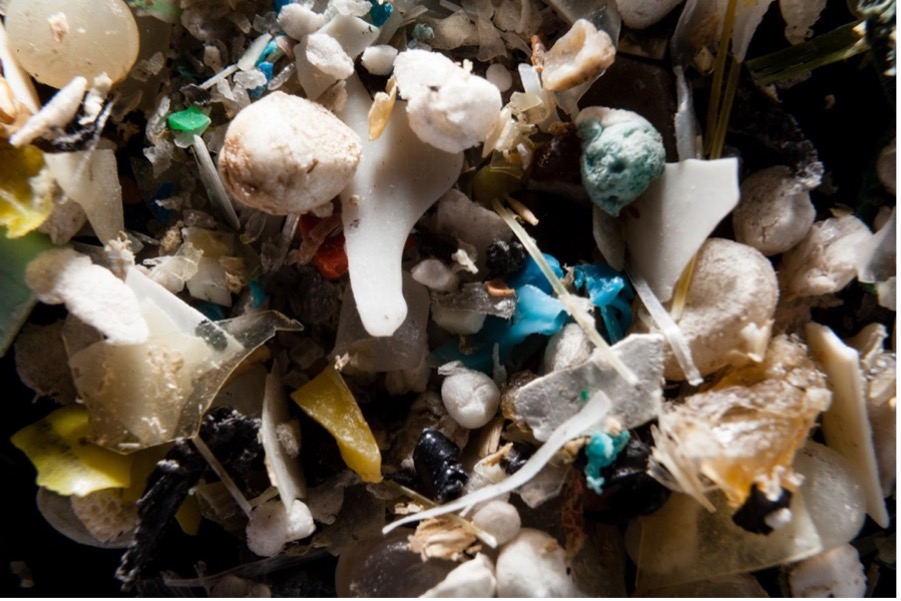Marine farming, termed ‘aquaculture’ is a way to supply sea food to consumers without catching it from the natural environment. Of course, arguments can be made about possible benefits and consequences of aquaculture, but let us put those aside for now and focus on the science behind aquaculture.

A main goal of aquaculture is to farm creatures that are comparable to what is found in nature. Natural environments are complex though, so mimicking the conditions correctly in a cultured environment can be tricky, making it difficult to raise animals that compare to those from the wild. For example, many attempts to culture Octopus vulgaris, a popular fisheries catch (figure 1), have been unsuccessful during early stages of growth. The failure to raise O. vulgaris to adulthood (figure 2) in culture hinders any chance of successful aquaculture.

To identify the cause of mortality of laboratory O. vulgaris paralarvae (the young octopuses), scientists designed a study to compare the fatty acid (FA) component of laboratory raised paralarvea with wild paralavae of the same age. The idea behind the study is that if they can identify a difference in FA then they could determine the source, which would enable them present a solution and potentially have successful aquacultures of O. vulgaris in the future. The study design is unique from previous work on this problem because researchers looked at individuals for data, as oppose to previous studies on groups, and they will only be comparing cultured paralavae with wild paralarvae of equivalent age. These two factors set this study apart because it can capture the natural variation in the wild population and because it is comparing wild and cultured paralarvae while they are at the same growth stage, respectively.
Methods:
O. vulgaris paralarvae samples were collected in October 2013 from Ria de Vigo on the R/V Mytilus. Only ten wild specimens were collected and brought back to the lab for analysis because of their wide distribution in the water column.

In the laboratory dorsal mantle length (body length) was measured. In addition, age was determined based on the length of the lateral hood surface (LHS), which grows in daily increments, on the beak (figure 3). The growth increments are visible with the right combination magnification, transmitted light, and 3D imagining. They are counted to determine the age of the paralarvae. The ages of wild paralarvea were used as the selection criterium for the cultured paralarvae used in the analysis.
Wild and cultured paralarvae fatty acid composition was determined using robust analytical techniques and complex laboratory instruments. Researchers compared their data and the results of similar studies using principal component analysis to identify patterns in their findings.
Results:
Researchers were able to isolate only six of the ten beaks during the extractions due to the delicacy of the technique. The undamaged group of six ranged between 6 and 8 days old. The scientists determined that for their purposes, using LHS as a proxy for age is more accurate than determining age from a laboratory determined formula because it does not rely on specific environmental conditions. It also removes the assumption that all hatchlings are the same size, which is important because hatchling size may vary as a function of diet, temperature, and the mother’s health, for instance.
From the FA statistical analysis three groups were determined: hatchlings, cultured paralarvae, and wild paralarvae. Scientists observed that the difference between wild and cultured specimen increases with age. In other words, the hatchlings from culture are similar to the wild paralarvae, however, as they grow into paralarvae in the lab their fatty acid make up differs more and more from the wild specimen of the same age. Scientists were able to eliminate methodology as the cause of their observations because the results were similar to other studies.
There were two main differences in fatty acid composition between wild and laboratory paralarvae. First, the paralarvae from the culture had lesser amounts of DHA than the wild paralarvae. Second, culture paralarvae had an additional fatty acid, called 18:3n-3, which was not found at measurable amounts in the wild paralarvae.
Discussion:
The difference in FA between cultured and wild paralarve that appears with age is likely a result of their diet. In the laboratory, paralarvae mostly consume Artemi, however, in the wild, paralarvea prefer decapod crustacean zoeae, which Artemi is not. It is apparent that the Artemi diet does to supply a sufficient amount of DHA to the laboratory paralarvae population. The diet does however appear to supply 18:3n-3. Further study is needed to address just how much DHA is needed in culture diets to mimic the wild ones, currently, the diets are insufficient at accommodating nutritional needs during early growth stages Once more information is gathered, successful aquacultures of O. vulgaris could be in the future.
Hello, welcome to Oceanbites! My name is Annie, I’m a marine research scientist who has been lucky to have had many roles in my neophyte career, including graduate student, laboratory technician, research associate, and adjunct faculty. Research topics I’ve been involved with are paleoceanographic nutrient cycling, lake and marine geochemistry, biological oceanography, and exploration. My favorite job as a scientist is working in the laboratory and the field because I love interacting with my research! Some of my favorite field memories are diving 3000-m in ALVIN in 2014, getting to drive Jason while he was on the seafloor in 2017, and learning how to generate high resolution bathymetric maps during a hydrographic field course in 2019!

